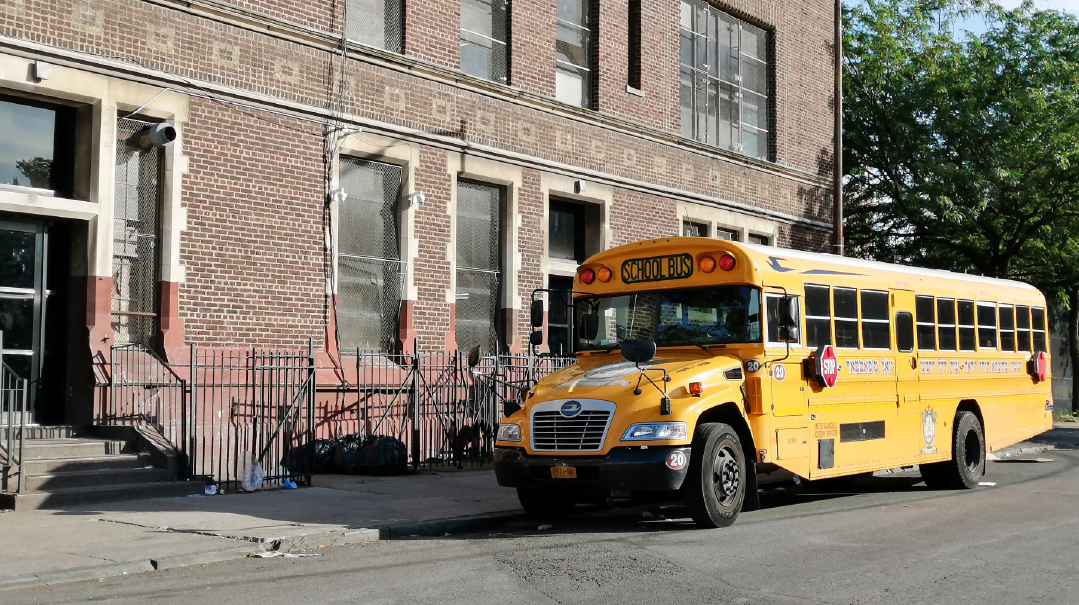Yeshivos in the Crosshairs: Round II

It is clear that the Regents are determined to exert their control over private schools for the first time

The first attempt by the New York state education department to extend its umbrella over private schools ended disastrously for it, with a record 140,000 comments flooding in, about 98 percent of them carrying the unambiguous message to stay out.
Now, a pandemic later, they are ready for the next round. Months of meetings with stakeholders has taught the Board of Regents, the independent body that oversees education in the state, a few lessons — take parents’ priorities into account, consider a religious community’s beliefs, and be flexible. And above all, don’t make it “my way or the highway”; in other words, set a goal and allow schools to reach it using their own unique methods.
At their last monthly meeting, the board announced it will propose a new set of regulations that all private schools must meet in order to be registered. The regulations will be out in the fall, followed by a 60-day comment period. If any revisions are made subsequent to that, the Regents will present them to the public for a further comment period of 45 days.
“As it selects the path forward,” Chancellor Lester Young said in a statement, “the Board of Regents will carefully weigh the demands of its duty, attempt to chart a direction that is both respectful of the state’s role as the greeter of immigrants and protector of many faiths, and ensure that our students are prepared for a meaningful future.”
The group of 17 men and women charged with formulating education policy in New York state made its first attempt at regulating yeshivos two years ago, tossing a broad net that would cover everything from what material must be taught, how many hours must be dedicated to secular studies, and how teachers may be trained.
That proved to be an overreach, particularly the mandate for nearly five hours a day of secular subjects in grades seven and eight. The overwhelming number of responses — 140,000 is more than double the previous record of comments recorded in the state — led the board to acknowledge that it had failed to consult with the community. The board promised a redo, this time after meeting “stakeholders.”
The meetings yielded 157 responses from the 1,800 private schools in the state — including 20 from Jewish schools. The most responses came in from the independent schools, at 66, and from the Catholics, with 41.
When Covid began, Governor Andrew Cuomo extended the deadline for the regulations so the board would not be required to allow public comment on them after revisions. But in the end, the board tossed them completely and elected to begin anew.
The first comment period overlapped with the summer vacation, hampering efforts to formulate a campaign to get responses. This next period will likely happen in late fall or early winter, when yeshivos are in session.
How the board will go from here is anybody’s bad guess. It is clear that the Regents are determined to exert their control over private schools for the first time, which will anger a sizeable portion of rabbanim who have been arguing that any state control must be fought, in court if necessary. They are also highly unlikely to go the path of intrusive regulations as they did last time. The question now is whether the community will fight a battle over rules that most yeshivos can live with, even though they may be a death knell for some of the more chassidish ones.
The Hawk That Had Boro Park Hooked
In entertainment-deprived Boro Park, where the extent of recreation is dancing at chasunahs and going out on Chol Hamoed, the presence of a red-tailed hawk has been drawing crowds.
Raising its brood in a dense neighborhood has spooked the powerful hawk. It has become aggressive as it seeks to protect its young, swooping down on the streets below, grabbing shtreimels and sheitels, and even attacking people.
Everyone in the area knows where “the house with the hawk” is. I stopped a few children on bikes who were talking animatedly, and they immediately began telling me all about the big bird that has colored their lives these past two months.
“My cousin saw it catch a bird in middle of the air!” one boy says in Yiddish.
“I saw it catch a squirrel,” another adds.
They direct me to the house — “look up there, you see the bird on the fire escape?”
I strain my eyes, and there it is, the pride of 14th Avenue straddling the railing.
I asked two young girls playing outside which apartment the hawk calls home.
“It’s Prero,” one of them responded. “But don’t bother knocking, they don’t let anyone in.”
I tramped up the six flights and introduced myself as Yochonon Donn from Mishpacha — “Oh, we read Mishpacha!” Mrs. Prero exclaimed — and was granted a visa to ground zero.
No wonder they don’t let anyone in, the middle-aged couple has been swamped with requests to see their famous window-ledge-dweller. One boy even came and offered to catch the hawk; the eager beaver was politely refused.
“It’s a crazy thing,” Mr. Prero said. “All of Boro Park is busy with this.”
I came just in time. Only a week before, Animal Control agents came down after receiving numerous reports of the hawk attacking people. But the good agents explained that they exist to protect animals from humans, not humans from animals. The Department of Environmental Protection, whose purpose apparently was protecting humans, was to come at seven the next morning and remove the predator.
The large bird appeared abruptly on Pesach and built a nest on the fire escape attached to the sixth-floor apartment of Chaim and Sheindy Prero. The couple had been in Lakewood for Yom Tov, and returned to scratching sounds and flapping wings outside the window at the corner of 14th Avenue and 46th Street.
“I was curious so I went to look at the window,” Mrs. Prero said. “I saw two big birds that looked like chickens and I jumped back. I went out of the room and I started screaming.”
I go over to the window and open the blinds. The hawk, which had been focusing its eagle eyes on the street below, jumped around and spread its wings in a defensive posture. Two young hatchlings lay in the crudely constructed nest, one of them lazily lifting its head and staring at me.
The Boro Park hawk seemingly has enemies everywhere. The male, which is double the female’s size, was not there, but both have been swooping down on passersby, grating, grabbing, and goring. Chaim Prero himself has a deep gash above his right eye that required five stitches. He had stuck his head out of a window and was scratched by the hawk, which apparently misunderstood his curiosity for full-fledged combat.
Before I leave, I go take a look at the bird. It is still standing at the window, eyes on the lookout for the threat it perceived 15 minutes before.
“I’m happy they will be going away,” Mr. Prero said. “I had enough of them already.”
“I’d rather be famous for other things,” his wife added, laughing.
(Originally featured in Mishpacha, Issue 862)
Oops! We could not locate your form.













